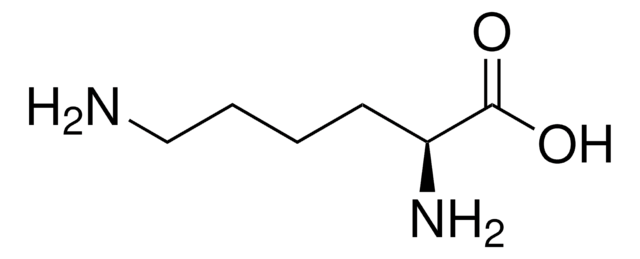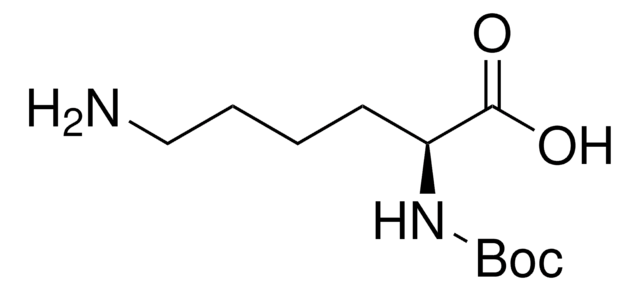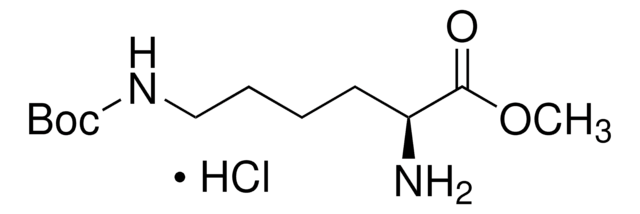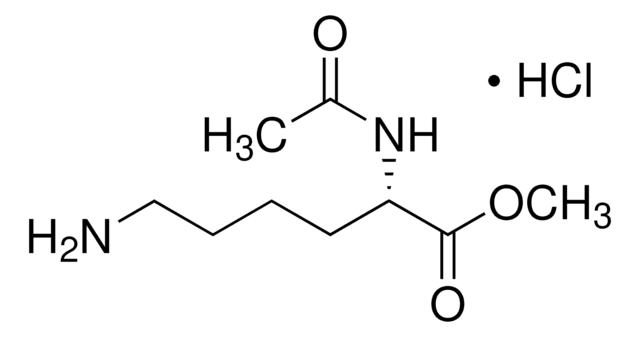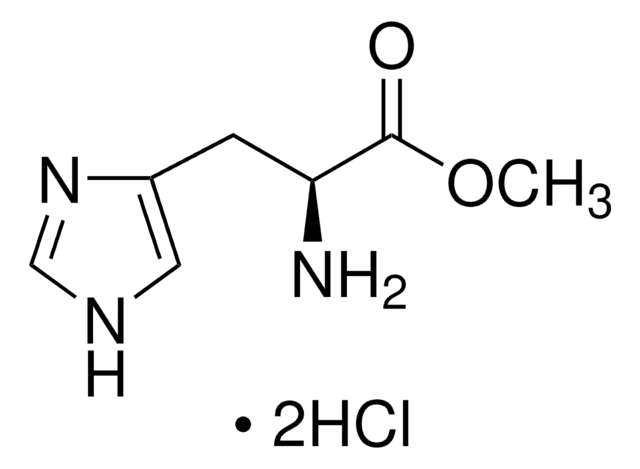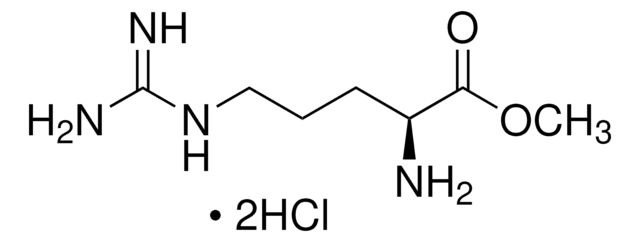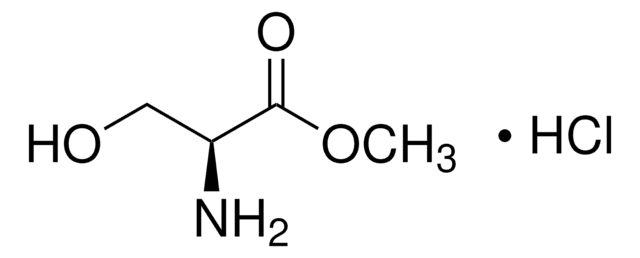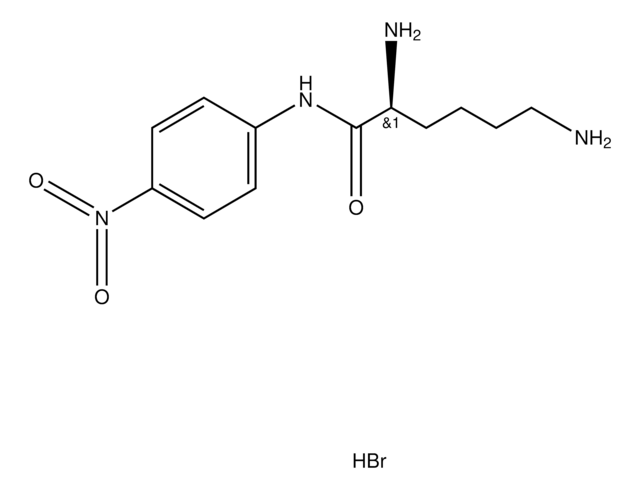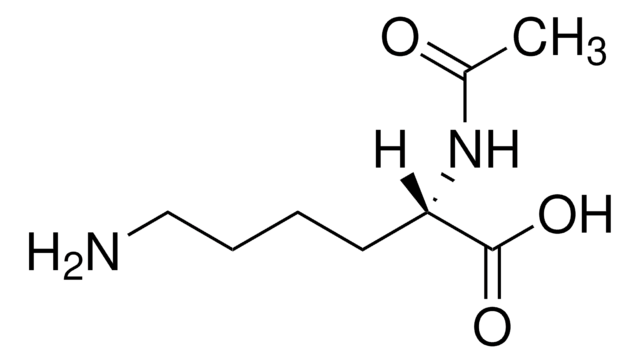L0645
L-Lysine methyl ester dihydrochloride
≥99% (TLC)
Sign Into View Organizational & Contract Pricing
All Photos(1)
About This Item
Empirical Formula (Hill Notation):
C7H16N2O2 · 2HCl
CAS Number:
Molecular Weight:
233.14
EC Number:
MDL number:
UNSPSC Code:
12352209
PubChem Substance ID:
NACRES:
NA.26
Recommended Products
Product Name
L-Lysine methyl ester dihydrochloride,
Assay
≥99% (TLC)
Quality Level
form
powder
color
white
storage temp.
−20°C
SMILES string
Cl.COC(=O)C(N)CCCCN
InChI
1S/C7H16N2O2.ClH/c1-11-7(10)6(9)4-2-3-5-8;/h6H,2-5,8-9H2,1H3;1H
InChI key
FORVAIDSGSLRPX-UHFFFAOYSA-N
Looking for similar products? Visit Product Comparison Guide
Application
L-Lysine methyl ester is used in the production of lysine methyl ester based cationic surfactants and hydrogels.
Storage Class Code
11 - Combustible Solids
WGK
WGK 3
Flash Point(F)
Not applicable
Flash Point(C)
Not applicable
Personal Protective Equipment
dust mask type N95 (US), Eyeshields, Gloves
Choose from one of the most recent versions:
Certificates of Analysis (COA)
Lot/Batch Number
Don't see the Right Version?
If you require a particular version, you can look up a specific certificate by the Lot or Batch number.
Already Own This Product?
Find documentation for the products that you have recently purchased in the Document Library.
Customers Also Viewed
Atoosa Maleki et al.
Carbohydrate research, 342(18), 2776-2792 (2007-09-29)
Dynamic light scattering (DLS) and rheological experiments have been performed on semidilute aqueous hyaluronic acid (HA) solutions during the chemical cross-linking process with a water-soluble carbodiimide (WSC) to produce a hydrogel. The formation and destruction of the gel are characterized.
C O Mills et al.
Biochimica et biophysica acta, 1336(3), 485-496 (1997-11-21)
We have synthesised and characterised a fluorescent monohydroxy bile salt analogue, lithocholyl-lysyl-fluorescein and compared its physical and biological properties with those of lithocholate, glycolithocholate, sulpholithocholate, lithocholic acid glucuronide and taurocholate. The synthetic method used excess N-epsilon-CBZ-L-lysine methyl ester hydrochloride and
Aurora Pinazo et al.
Langmuir : the ACS journal of surfaces and colloids, 25(14), 7803-7814 (2009-07-15)
The synthesis of a novel class of lysine-based cationic amphiphilic derivatives of the type N(epsilon),N(epsilon)'-bis(n-acyloxypropyl)-l-lysine methyl ester salts combining several hydroxyl functions and aliphatic chains of 12 or 14 carbon atoms is described. The compounds have one, two, three, and
Chao Wang et al.
Oncotarget, 8(19), 31612-31625 (2017-04-14)
Ascorbic acid, β-glycerophosphate, and dexamethasone have been used in osteogenesis differentiation medium for in vitro cell culture, nothing is known for delivering these three bioactive compounds in vivo. In this study, we synthesized a novel bioactive scaffold by combining these
Zhen Ye et al.
Contrast media & molecular imaging, 11(1), 32-40 (2015-07-29)
This work aims to develop safe and effective gadolinium (III)-based biodegradable macromolecular MRI contrast agents for blood pool and cancer imaging. A neutral polydisulfide containing macrocyclic Gd-DOTA monoamide (GOLS) was synthesized and characterized. In addition to studying the in vitro
Our team of scientists has experience in all areas of research including Life Science, Material Science, Chemical Synthesis, Chromatography, Analytical and many others.
Contact Technical Service